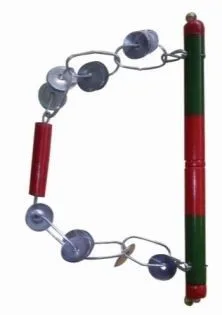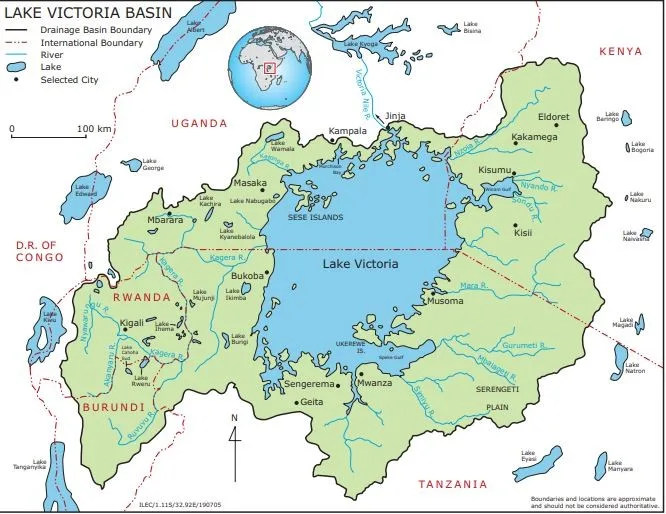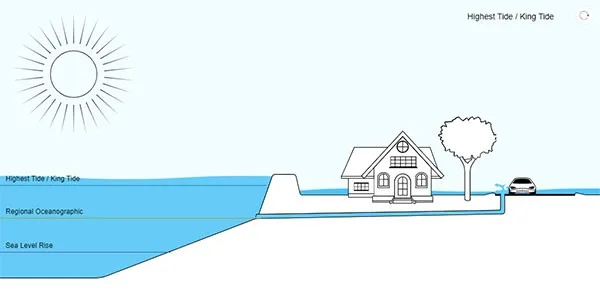Lezim
Syllabus: GS1/Culture
Context
- The Hindi film ‘Chhaava’ based on Chhatrapati Sambhaji Maharaj landed in a controversy with people objecting to a Lezim dance sequence.
About
- Lezim or lazium is a folk dance form, from the state of Maharashtra.
- It gets its name after a musical instrument- a unique wooden stick, with jingling cymbals attached to it that the dancers carry while performing the dance.
- Lizem was earlier traditionally used as an instrument in all folk dances but today it is primarily used in Ganesha procession.

- Traditionally, it was performed as a sport by Maratha warriors to build their muscles and fitness drills in Maharashtra.
- Lezim folk dance originated in the year 1986, when some of the communities started performing it.
Chhatrapati Sambhaji Maharaj
- Chhatrapati Sambhaji Maharaj was the eldest son of Chhatrapati Shivaji Maharaj.
- He came to power following a bloody succession battle with his half-brother Rajaram in 1681.
- The Mughal emperor Aurangzeb (1618-1707) was a contemporary and his plan to extend his empire towards the Deccan often resulted in clashes with the Marathas.
Source: IE
Lala Lajpat Rai
Syllabus: GS 1/History
In News
- India is remembering Lala Lajpat Rai on his 160th Birth Anniversary.
Birth and Early Life:
- Born on 28th January 1865 in Dhudike, Ludhiana district, Punjab.
- He was one of the “Lal Bal Pal” trio, along with Bal Gangadhar Tilak and Bipin Chandra Pal.
- He supported the Shuddhi movement.
- Contributions : Joined Arya Samaj in 1882 and became one of its prominent leaders.
- Played a key role in social welfare, famine relief, and abolition of untouchability.
- Founded the Hindu Relief Movement in 1897 to help famine-stricken people and prevent missionary influence.
- He founded Punjab National Bank, Lakshmi Insurance Company, and the Servants of the People Society.
- He was associated with the establishment of DAV College for educational purposes.
- Played a key role in social welfare, famine relief, and abolition of untouchability.
- Writing and Advocacy: Wrote biographies on Mazzini, Garibaldi, Shivaji, and Swami Dayanand.
- Authored “Unhappy India” in response to Katherine Mayo’s “Mother India.” and Young India: An Interpretation.
- Used his writings to advocate for India’s freedom and culture.
- Authored “Unhappy India” in response to Katherine Mayo’s “Mother India.” and Young India: An Interpretation.
- Political Activities and Nationalism: Opposed British colonial policies, became a prominent leader in Indian National Congress.
- Advocated for Swadeshi and opposed British repression after the partition of Bengal in 1905.
- Criticized “Moderate” politics, advocating for more direct action and self-reliance.
- He was widely recognized as Punjab Kesari.
- Exile and International Efforts: Went into exile in 1907, toured England and the USA, speaking against British colonialism.
- Started “Indian Home Rule League of America” to support India’s independence movement.
- Return to India and Later Contributions: In the special session of the Congress held in Calcutta (1920) Lala Lajpat Rai was elected President by the All India Congress Committee.
- It was under his leadership that the Congress adopted the resolution of Non-cooperation with the British Government after the Jallianwala Bagh tragedy.
- Final Struggle and Death: Led the boycott procession against the Simon Commission in 1928.
- Received fatal injuries from police lathi charges on 30th October 1928, dying on 17th November 1928.
- Legacy: Lala Lajpat Rai’s contributions to the freedom movement, social reforms, and education continue to inspire generations.
- Left a legacy of patriotism, sacrifice, and inspiration for India’s freedom struggle.
Source :Air
Lake Victoria
Syllabus: GS1/Places in News
Context
- An international team of researchers from North America and Kenya has completed a genetic survey of cyanobacteria in the Winam Gulf of Lake Victoria, Kenya.
About
- Cyanobacteria, formerly known as blue-green algae, form dense and sometimes toxic blooms in freshwater and marine environments.
- These blooms disrupt ecosystems, degrade water quality, and pose serious risks to humans, livestock, and aquatic life.
- The Winam Gulf, known for its prolific year-round cyanoHABs, is one of Lake Victoria’s most productive fishing basins.
- The study investigated cyanobacterial assemblage, function, and biosynthetic potential across different regions of the gulf.
Victoria Lake
- It is the world’s largest tropical lake. It’s also the largest lake in Africa, and the second-largest freshwater lake in the world by surface area (after Lake Superior in North America).
- The lake was named in honour of Queen Victoria of England.
- It is located in East Africa, spanning towards the borders of three countries: Tanzania, Uganda, and Kenya.

- The lake serves as the chief reservoir of the River Nile.
- The lake is a vital resource for millions of people who rely on fishing as their primary livelihood.
Source: DTE
Tidal Flooding
Syllabus: GS1/ Physical Geography
Context
- Tidal flooding has become frequent in Ernakulam district of Kerala lately.
Tidal Flooding
- Tidal flooding, also known as “nuisance flooding” or “sunny day flooding,” happens when high tides cause water levels to rise and flood low-lying coastal areas.
- Causes: Changes in prevailing winds, shifts in ocean currents, and strong tidal forces (which occur during full or new moon) can all cause high tide flooding.
- High tide flooding falls into three levels of severity: minor, moderate, and major.

- Concerns:
- Tidal flooding disrupts daily life by flooding roads and services, damages infrastructure, and causes economic losses for businesses.
- It accelerates coastal erosion, harms habitats, and contaminates freshwater supplies with saltwater.
- Repeated flooding forces communities to relocate.
- Over time, rising sea levels due to climate change will make tidal flooding more frequent and severe.
Source: TH
Unified Pension Scheme
Syllabus :GS 2/Governance
In News
- The Finance Ministry notified the Unified Pension Scheme (UPS ) for workers covered by the National Pension System (NPS), effective from April 1, 2025.
Unified Pension Scheme(UPS)
- The UPS was recommended as an alternative to the NPS by a panel led by former Finance Secretary T.V. Somanathan.
- The Pension Fund Regulatory and Development Authority (PFRDA) will determine the mechanism for retirees opting for the UPS, addressing top-up amounts relative to their NPS payouts.
- It will offer employees an assured pension of 50% of their average basic pay over the last 12 months before retirement, for a minimum service of 25 years.
- Additional Benefits: The UPS includes a family pension of 60% of the government worker’s pension upon their death, a lumpsum superannuation payout, and gratuity benefits.
- A minimum pension of ₹10,000/month is promised for those with at least 10 years of Union government service.
| NPS vs. UPS: – NPS, introduced in 2004, did not offer assured pensions. The UPS, however, restores a guaranteed pension of 50% of the last drawn salary, with periodic dearness relief tied to inflation. – Union government employees already covered under NPS can choose the UPS option. Those who don’t opt for UPS will remain in NPS, with no guaranteed pension. – Employees opting for UPS cannot claim other financial benefits, policy changes, or parity with future retirees after they make the choice. |
Source :TH
Piezoelectricity
Syllabus :GS3/Science and Tech
In News
- Recently, the author at IIT Kanpur, explained the role of piezoelectric materials in the functioning of stove lighters and their ability to create sparks.
About Stove-Lighter
- The stove-lighter creates a small spark when clicked. This spark, though seemingly harmless, is a result of electrical charges.
- An electric spark occurs when there is a difference in electron quantity between two points.
- One point has a surplus of electrons (negative), and the other a deficiency (positive), causing electrons to move and create a spark.
- Lightning is essentially a large-scale electric spark caused by extreme electron imbalances between charged clouds in the sky, creating a spark through the air after breaking molecules.
Piezoelectricity
- Piezoelectricity is the generation of electrical charge in a solid material by an applied mechanical stress and vice versa.
- The piezoelectric effect is exhibited in materials that develop a net electric dipole moment.
- In such materials, the dipole density or polarization changes in response to mechanical strain resulting in a net accumulation of charge.
- How Piezoelectric Materials Work: In their natural state, piezoelectric materials have alternating positive and negative ions. When pressure is applied, the ions shift, creating a charge imbalance and generating a high voltage, which causes a spark.
- Applications: Piezoelectronics are crucial for energy conversion, sensing, and applications in energy harvesting, health monitoring, and more.
- Lighters use piezoelectric materials that generate a surplus and deficiency of electrons when pressure is applied. These materials have a specific atomic structure that allows them to generate electric charge under pressure.
Source :TH
Previous article
External Commercial Borrowings (ECB) Landscape
Next article
Annual Status of Education Report (ASER) 2024